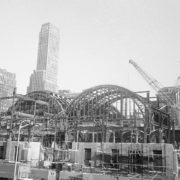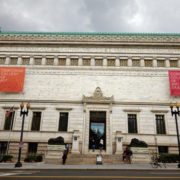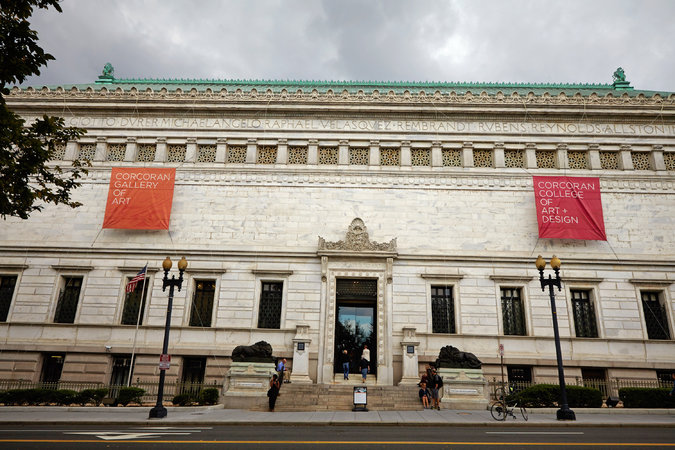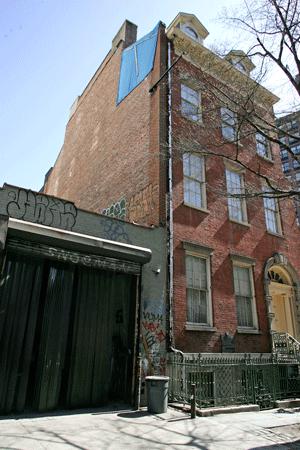Punishing Preservationists for their Lack of Resources? The Dangers of the Proposed “Intro 775” Landmarks Legislation.
Ruth Osborne

The Empire State Building, one of the landmarks that took longer than 1 year to secure.
I recently attended a lecture on the survival of one of New York City’s landmarked sites (now a professionally-staffed museum), and the speaker was very reluctant to answer mine and others’ questions about the politics behind historic preservation and the Landmarks Preservation Commission’s authority. He did, however, acknowledge that public opinion and testimony truly is the most effective thing in his experience of advocating for preservation.
Public outcry was the reason New York City Landmarks Law was enacted in the first place, and the LPC was created for the fundamental purpose of providing a voice for the historic integrity of a neighborhood or building that would otherwise be overlooked and forever wiped out by new development. But now, in the same year that we celebrate the fiftieth anniversary of Landmarks Law and the rich history it has helped preserve – places like Grand Central Station, 30 Rockefeller Center, and the Empire State building – proposed legislation now threatens to put a muzzle back on that voice.
Major news outlets this week have finally turned to acknowledging the Intro 775 bill, which will be scheduled for public hearing next week on September 9th. This bill is both unnecessary and unreasonable, as many preservation advocates have argued. It will essentially serve only to punish historic landmarks and the LPC for having been provided inadequate resources with which to do their job of thoroughly researching and considering potential landmarks. It could create an environment in which developers again have more say, and preservationists are no longer able to effectively do their job. Intro 775 proposes to implement a strict timeline on the designation of landmarks (both interior and scenic), as well as historic districts. It will, in effect:
(1) Impose a shorter calendaring timeline of for the LPC to hold a public hearing (180 days for individual landmarks, 1 year for historic districts).
(2) Impose a follow-up timeline after the public hearing within which the LPC must take final action (180 days for individual landmarks, 1 year for historic districts).
(3) Require the LPC to make determination on current items on the calendar within 18 months (that is, 95 total properties and districts).
(4) Barr a property or district unable to pass designation by the LPC from reconsideration of landmark status for another 5 years.
This is essentially imposing unrealistic time limits on the Commission for doing their work well and thoroughly. It acts almost as an inadequate performance review, but without any true understanding of what it really takes for the Commission to do their job properly. An interview earlier this summer with Andrew Berman, the Executive Director of the Greenwich Village Society for Historic Preservation, gave ArtWatch some insight into the dangers this legislation could pose to the future of historic preservation in New York.
RO: Thank you for taking the time to speak with me about something both the Greenwich Village Society for Historic Preservation and ArtWatch is passionate about: proper stewardship of our cultural and artistic heritage. As ArtWatch is New York-based, we are currently expanding to cover issues regarding historic preservation of the city’s cultural landmarks and neighborhoods and are therefore interested in connecting with organizations like yours that work tirelessly towards such efforts. You spoke of a major issue of current concern for GVSHP: Intro 775 and the landmarking process. Can you elaborate briefly on GVSHP’s position on this?
AB: We’re definitely very concerned with Intro 775. It’s being portrayed as aiming to ensure there aren’t these delays or backlogs at the preservation commission but it doesn’t really do anything to ensure the commission would move forward in a timely fashion. It just penalizes the public if they don’t. Ninety-percent of recent designations do move within timing the bill proscribes. And in cases that don’t, there are understandable reasons why. This bill would essentially throw the baby out with the bathwater. It creates pocket veto: if the LPC doesn’t act within this tight time frame, the proposal will be rejected automatically. The bill doesn’t do anything to help get rid of some things that can be reasons why designations can take so long. The LPC is the smallest of all the city’s agencies – but the bill doesn’t improve funding or staffing. What it would really do is encourage developers resistant to their sites being landmarked to come up with as many ways as possible for delaying designation. Designation can drag out and be prohibited from happening for an extensive period of time. We’re also concerned because it’s been introduced by chairs of landmarks committees who we hope would have a more balanced approach. There are also instances in which developers have tried to prevent landmarking from taking place. This would just give them another tool to do that.
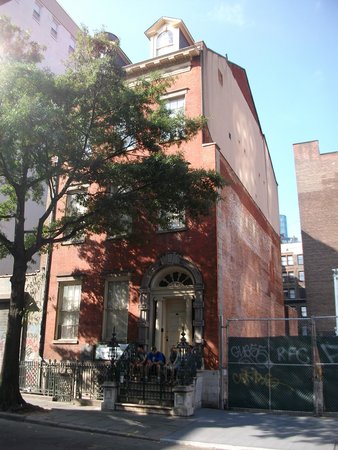
Merchant’s House Museum in NoHo, a landmark now endangered by construction next door. Courtesy: Herrmann Fan.
A letter recently sent to City Council Members from GVSHP and other preservationists does well to call out the inconsistencies of the proposed bill and why it should not be passed:
“Our research shows that the LPC has a solid track record of timely designation, if not within the strict litmus described by Intro 775, then nonetheless within a reasonable period of time. […] In the instances where LPC has failed to act within the proposed time
limits, this failure has been in part a result of the Commission’s limited resources. Designations require heavy investment of staff
time towards extensive research, in-depth examination of boundaries, a full airing of all information and viewpoints on a subject,
and the production of highly-detailed reports. […] it would force LPC to make decisions before all information has been
contemplated and all discussions have taken place.”
Does the City propose that their smallest agency do their work with an eye for speed and quantity instead of quality and thorough consideration of all parties involved and affected? How does it expect the LPC carry out their mission without having adequate time and resources to bring full attention to the task at hand? Or would it prefer they were less effective in considering a conscientious approach to city planning that often gets in the way of developers’ interests? Would it prefer the Commission had less and less power as if it weren’t even part of the dialogue in the first place? How would this help create discussion amongst all parties and interests involved? Would it not simply allow developers to have less restrictions and checks on their actions?
A recent New York Times article quoted Michael Slattery, senior VP for research at the Real Estate Board of New York: “The problem is it’s open-ended and indefinite if your building is calendared. […] If you want to sell your building or develop it, it makes that very hard. Property owners deserve to know what is in their future.” But then, don’t the residents of New York also deserve to have the cultural and historic integrity of their city’s landscape properly cared for and taken into account when a change is about to occur? This was the whole basis for the founding of the Commission in the first place – that the growth of the city should be a conscientious, thoughtful effort; one that recognizes the impact a building has on the city around it, and how it fits in with the character of that city. It was about growing respect for what has gone before and taking responsibility for new progress. Buildings – both old and new ones – have character and heart to them, and if we forsake that, then will we even recognize our city anymore?
By Ruth Osborne


